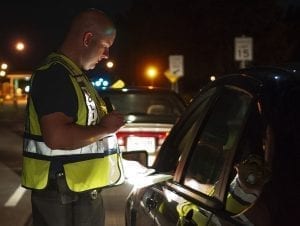Some drivers even wore shirts with seat belts printed on them while driving to avoid buckling up.
No one is too cool for safety, right? Not necessarily. Though pretty much everyone accepts that using a seat belt is safer than not, that wasn’t the case when seat belts first came around. Some people have a hard time with change.
Nothing represents people’s resistance to change better than the introduction of the seat belt. Though these safety devices have been around nearly for as long as cars themselves, using them wasn’t of much concern until several decades ago. When the government tried to make drivers wear seat belts, the public nearly revolted – some people even cut the seat belts out of their cars in protest. That a common sense safety measure that saved members of the public from having to seek out a Fayetteville car accident lawyer was so fiercely rejected should come as no surprise to anyone who lived through COVID-19.
Over time, the anger died down, especially when it became clear that wearing a seat belt can protect you from sustaining life-altering injuries in auto accidents. And thus, wearing a seat belt, which used to as uncool as it gets, became a widely accepted rule of the road.
How Did Using a Seat Belt Become a Rule of the Road?
Here in the U.S., people tend to like their freedoms, and the issue of government involvement in our day-to-day lives has been a hot topic of discussion since the beginning of time. So, when the government started to push seat belts for the public’s overall safety, the public, unsurprisingly, had a lot to say about it.
The National Highway Traffic Safety Administration (NHTSA) came out with a bang when making a stance on seat belts. In 1973, the agency decided that all newly manufactured cars in the United States would have a seat belt interlock system, preventing drivers from operating them when not buckled. As expected, the response from the general public was not favorable, and Congress quickly killed the NHTSA’s safety initiative.
That wasn’t the end of the matter, though. New York was the first state to enforce a seat belt law, doing so in 1984. In the coming years, nearly every state followed, and, in 2024, New Hampshire is the only state that does not currently have a seat belt law for adults. Despite being opposed to wearing seat belts at first (some drivers even wore shirts with seat belts printed on them while driving to avoid buckling up), today, the overwhelming agreement is that wearing a seat belt is, in fact, safer than not doing so.
If Seat Belts Were Lame, Why Did We Start Wearing Them?
Though lots of people weren’t fans of seat belt laws when they were first introduced, it’s not because the consequences were so severe. Even today, the worst thing you might get for not wearing a seat belt (aside from perishing in a tragic accident) is a small fine, at most. So, why did people start wearing seat belts anyway?

The reason for this is along the same lines as why people stopped driving drunk as frequently: we learned it was unsafe, even deadly. While many people today, even if they don’t wear seat belts, agree that restraining yourself inside a vehicle is better than being at risk of being thrown from that vehicle, when seat belts first started becoming popular, they didn’t see things so clearly. Some cut seat belts in their cars, and others compared laws mandating seat belt usage to tyranny. People were mad at the thought that a cop could ticket them for failing to do something as simple as wearing a seat belt.
But, as we’ve learned, not wearing a seat belt is a big deal. That’s why, in 2023, the NHTSA estimated that the national seat belt usage rate was 91.9%. As car manufacturers were forced to add seat belts to vehicles, and drivers started to appreciate the difference seat belts can make in preventing serious injuries, frustrations eventually started to die down, and people started to comply with seat belt requirements.
How Seat Belt Laws Have Increased Safety on the Roads
Since most states have seat belt laws in some capacity and seat belt usage is high across the country, drivers are able to avoid serious injury, unlike in the past.
As cars get bigger and faster, the likelihood that accidents will be life-altering for victims increases. The modern three-point seat belt restrains drivers across their laps and chests, keeping them in their vehicles even during intense impacts. This has had a massive impact on the risk of fatal and serious injuries in car accidents.
Wearing a seat belt can reduce your risk of fatal injury by up to 45% and your risk of moderate to critical injury by 50%. Using the proper restraints is even more important for children. States tend to have strict laws surrounding car seat use for kids, and for good reason. According to the NHTSA, child restraints can reduce the risk of fatalities for children younger than one by 71%.
Seat belts have made the roads safer in other ways, too. They force drivers to consider their safety and the safety of others on the road. Each time you buckle your seat belt, you’re making a conscious decision to protect yourself, which doesn’t seem so controversial and makes you wonder why anyone was ever opposed seat belts to begin with.


Join the conversation!